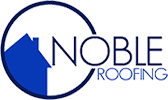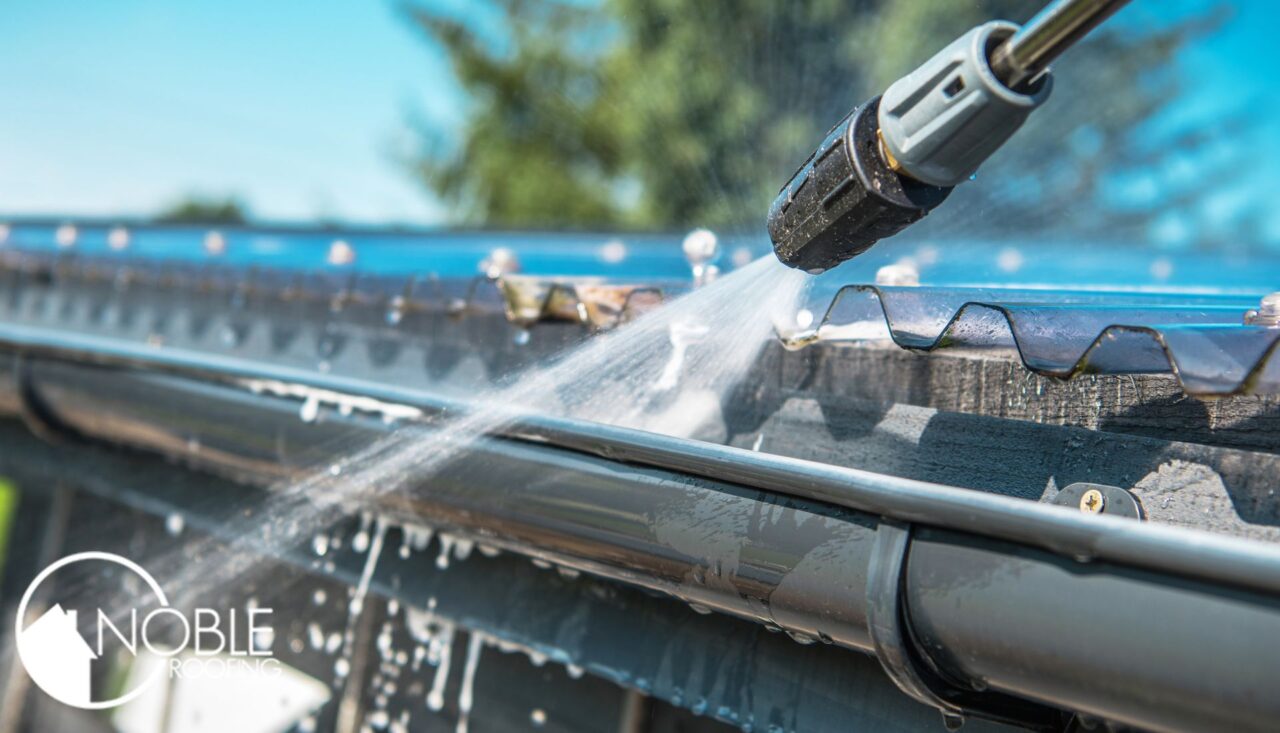Is It OK to Power Wash Your Roof? What Every Homeowner Needs to Know
Now that the sun’s out and summer is in the air, diligent homeowners are more than eager to take out the ol’ power washer and get rid of all the pollen from May. But look before you leap! Not everything needs or can handle this powerful cleaning tool. If you’ve noticed dark streaks, moss, or grime building up on your roof, your first instinct might be to grab a power washer and blast it clean. After all, pressure washing is a quick, effective way to remove dirt and stains from siding, sidewalks, and driveways. But when it comes to your roof, things aren’t that simple. Many homeowners wonder: Is it actually safe to power wash a roof?
The short answer is: usually not, especially if your roof is made of asphalt shingles. While pressure washing might seem like an easy solution, it can do more harm than good—causing costly damage, voiding warranties, and reducing the lifespan of your roofing system. That doesn’t mean you’re stuck with a dirty roof, though. There are safer, more effective alternatives for cleaning your roof that won’t risk long-term damage.
Let’s break down the risks, exceptions, and best practices to help you decide what’s right for your home.
Why Roofs Get Dirty in the First Place
Before tackling how to clean your roof, it helps to understand why it’s dirty. In many parts of the country, especially warm and humid regions, roofs collect organic material over time. You may notice:
-
Black streaks from algae (usually Gloeocapsa magma)
-
Green moss and lichen, which thrive in shaded, damp areas
-
Dirt, debris, and fallen leaves
-
Bird droppings and pollen buildup
These aren’t just cosmetic issues. Algae can hold moisture, moss can lift shingles, and accumulated debris can lead to water retention and premature wear. So cleaning your roof isn’t just about looks—it’s part of good home maintenance.
Why Power Washing Can Be Risky
A power washer shoots highly pressurized water, often at 1,500 to 3,000 PSI (pounds per square inch). That’s great for concrete or metal surfaces—but not for most roofing materials, particularly asphalt shingles.
Here are the key risks of power washing your roof:
1. Stripping Off Protective Granules
Asphalt shingles have a protective layer of granules that shield the roof from UV rays and weathering. High-pressure water can strip these granules away, weakening the shingle’s durability and significantly shortening its lifespan.
2. Water Intrusion
Unlike siding or pavement, roofs are layered systems designed to shed water, not withstand direct, high-pressure streams. Power washing can force water underneath shingles or tiles, leading to trapped moisture, rot, and even mold in your attic or roof decking.
3. Voided Warranty
Many shingle manufacturers specifically warn against using pressure washers. Doing so can void your warranty, leaving you without protection if future issues arise.
4. Physical Damage
High-pressure water can lift, crack, or dislodge shingles. It can also damage flashing and ridge caps, resulting in leaks that are costly to repair.
5. Personal Safety
Cleaning a roof with a power washer is also physically risky. The combination of wet surfaces, high pressure, and height can lead to serious injuries. Slips and falls from roofs are a common cause of homeowner injuries during DIY maintenance.
Are There Exceptions?
There are a few cases where gentle pressure washing may be appropriate, but only under very controlled conditions. For example:
-
Metal roofs or tile roofs may sometimes tolerate low-pressure washing, but only when done by a trained professional using the correct technique and equipment.
-
Some commercial-grade roofing materials (like TPO or EPDM) may be power-washed as part of routine maintenance, especially on flat roofs.
Even in these cases, soft washing is often the preferred method.
What’s the Best Way to Clean a Roof Safely?
Instead of power washing, roofing professionals recommend a method called soft washing. Soft washing uses low-pressure water combined with specialized cleaning solutions to gently remove stains, algae, moss, and dirt without damaging the roof.
Here’s how soft washing works:
-
A cleaning solution is applied to the roof, usually made from water, sodium hypochlorite (a form of bleach), and surfactants. This mixture kills algae, breaks down dirt, and loosens moss.
-
The solution sits for 15–20 minutes (or more, depending on the extent of growth) and does the heavy lifting.
-
The roof is rinsed with low-pressure water, often around 100 PSI—less than the pressure of a garden hose.
-
No scrubbing or blasting is necessary, and the roof is left to dry naturally.
Soft washing is effective and safe for asphalt shingles, and when done correctly, it won’t void your manufacturer’s warranty. It’s also longer-lasting than pressure washing because it kills algae at the root.
How Often Should You Clean Your Roof?
Most homeowners only need to clean their roof every 3 to 5 years, depending on the climate and amount of tree cover. If you live in a humid area or near lots of vegetation, you may need more frequent cleaning.
Here are some signs it’s time for a cleaning:
-
Noticeable black streaks or discoloration
-
Moss or lichen growth, especially on the north-facing side
-
Clogged or overflowing gutters due to roof debris
-
General buildup of dirt, pollen, or bird droppings
It’s best to clean your roof proactively—before heavy growth causes real damage.
DIY vs. Hiring a Professional
While some homeowners are tempted to DIY roof cleaning, it’s generally safest to hire a licensed roofing or exterior cleaning contractor. Pros have the right equipment, experience, and safety training to clean your roof effectively without damage.
If you decide to tackle it yourself, follow these precautions:
-
Never use high pressure
-
Use a manufacturer-approved soft wash solution
-
Wear non-slip shoes and use a safety harness if climbing on the roof
-
Avoid cleaning on windy or rainy days
When in doubt, leave it to the experts. A small upfront investment can prevent thousands in roof repairs.
Tips to Prevent Future Roof Stains
Once your roof is clean, there are steps you can take to prevent future buildup:
-
Trim overhanging trees to allow more sunlight and reduce moisture
-
Keep gutters clean to prevent water pooling
-
Install zinc or copper strips along the roof ridge; rainwater carries ions from these metals down the roof, killing algae and moss
-
Schedule regular inspections to catch problems early
Conclusion: Should You Power Wash Your Roof?
In most cases, the answer is no. Power washing your roof, especially if it’s made of asphalt shingles, is more likely to cause damage than to help. The high pressure can strip protective layers, force water into your home, and void your warranty.
Instead, soft washing is the preferred and safer method for removing algae, moss, and stains without harming your roof. Whether you hire a professional or carefully follow safe DIY practices, keeping your roof clean can protect your home’s value and prevent costly repairs down the road.
When it comes to roof maintenance, gentle is better. Choose the right method, and your roof will thank you.


